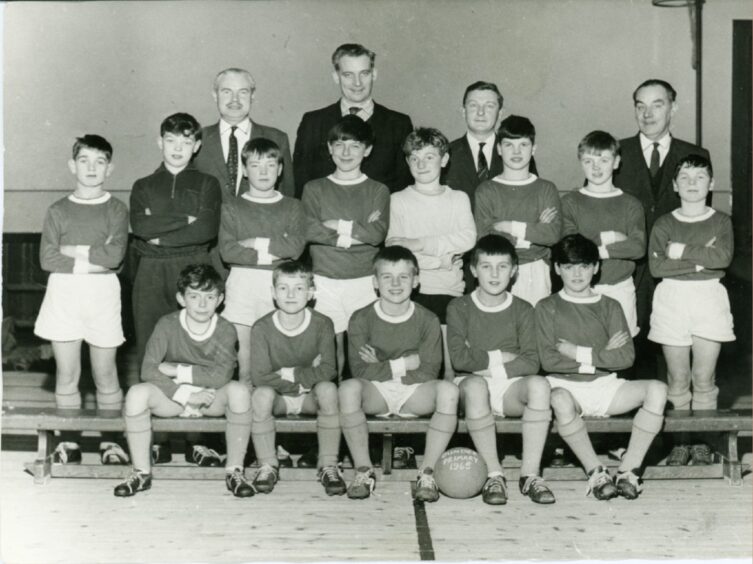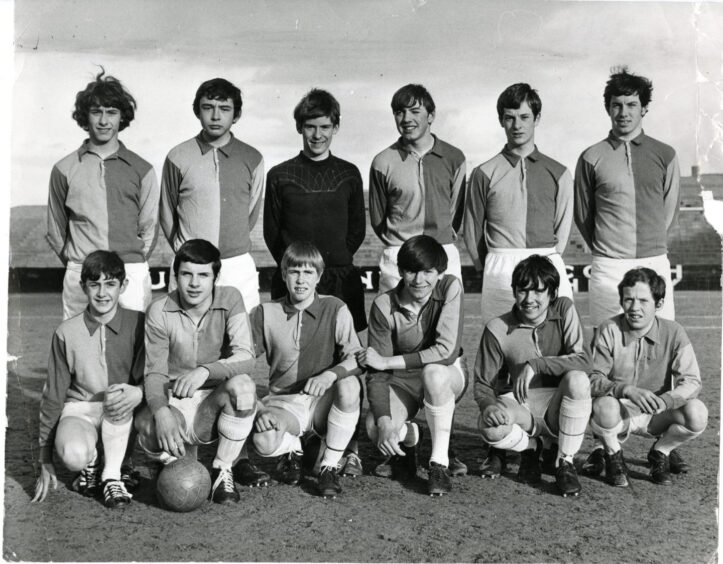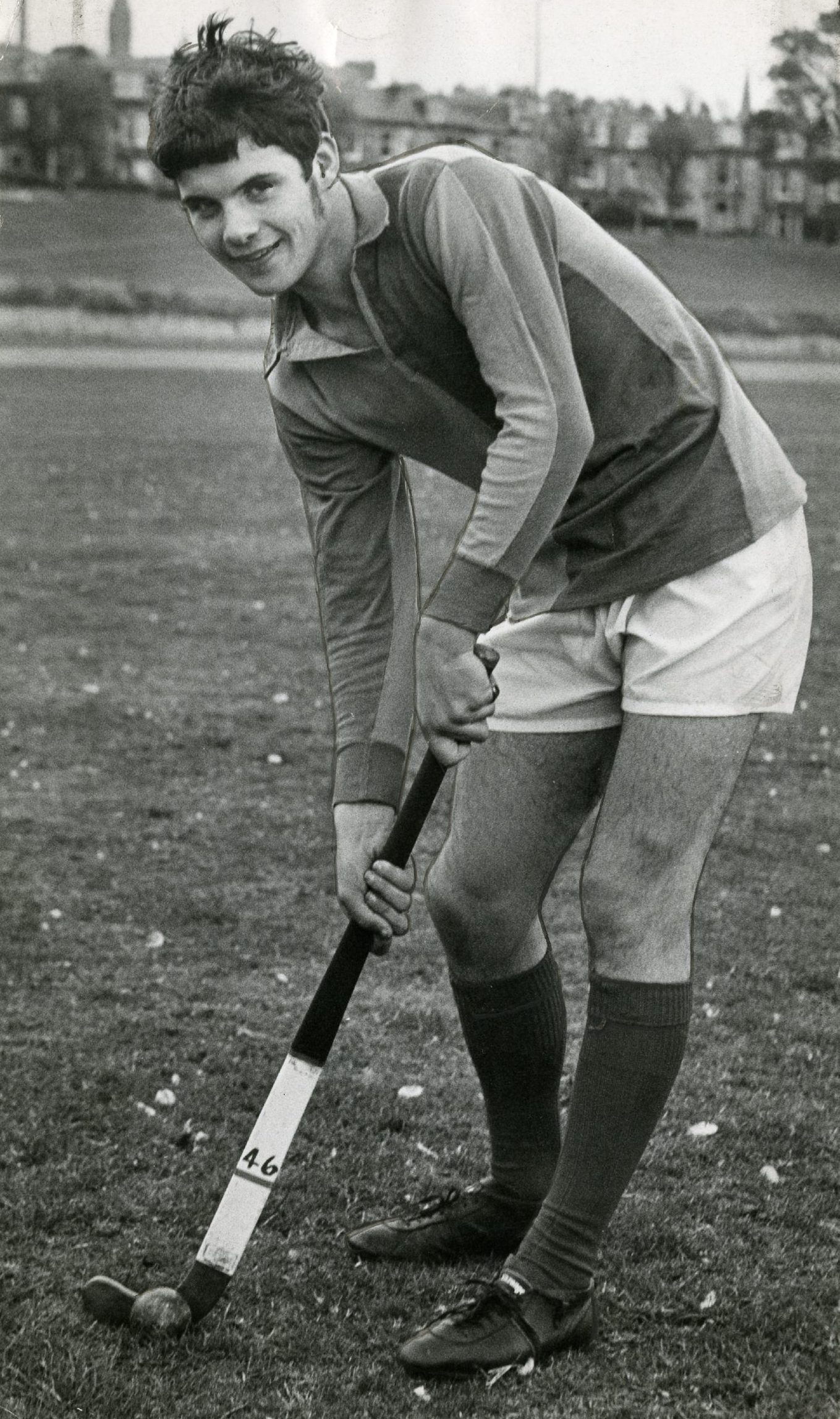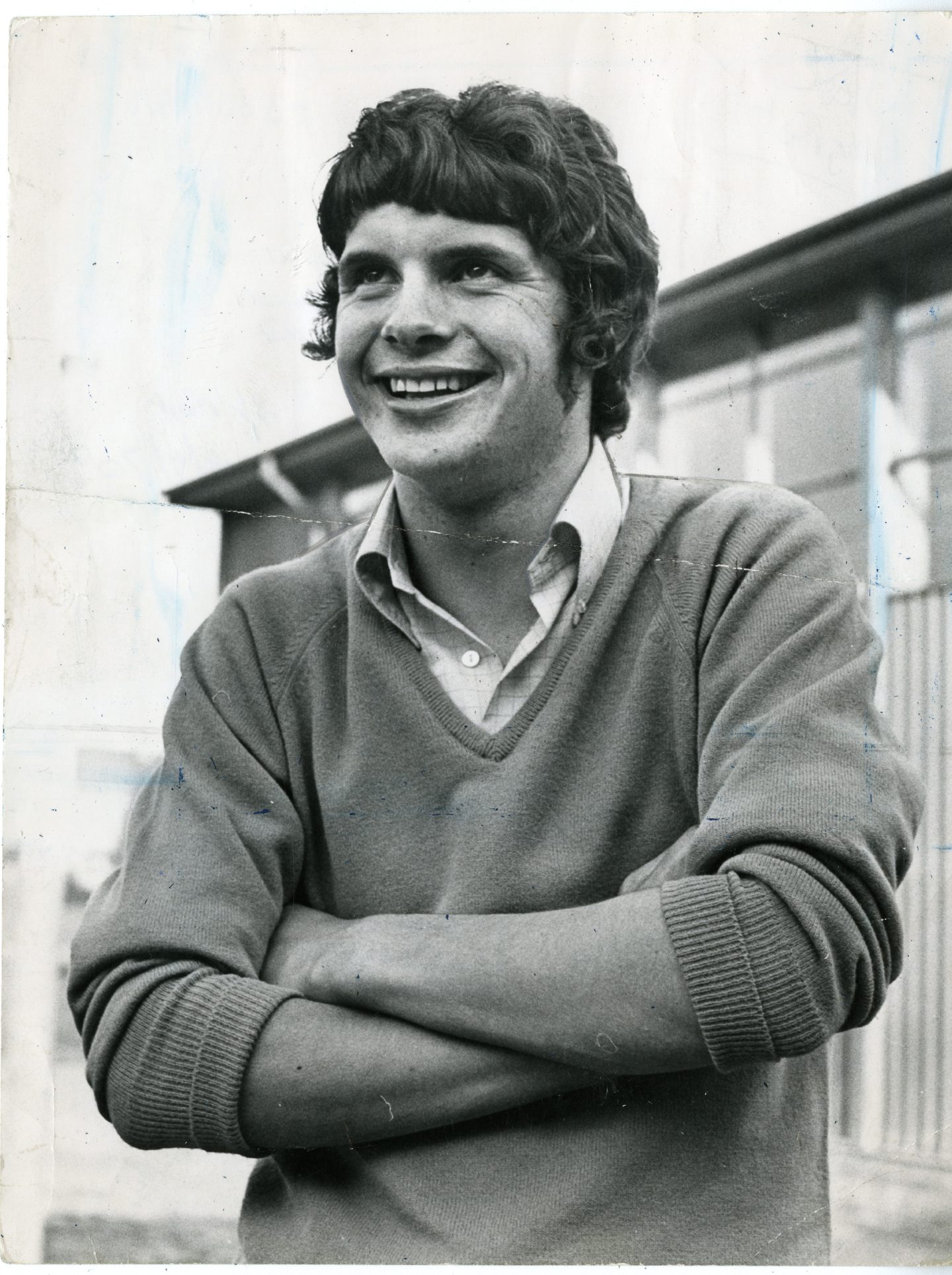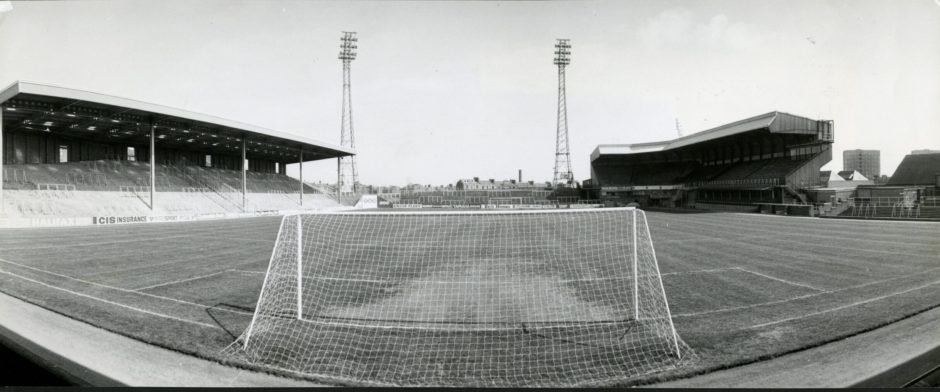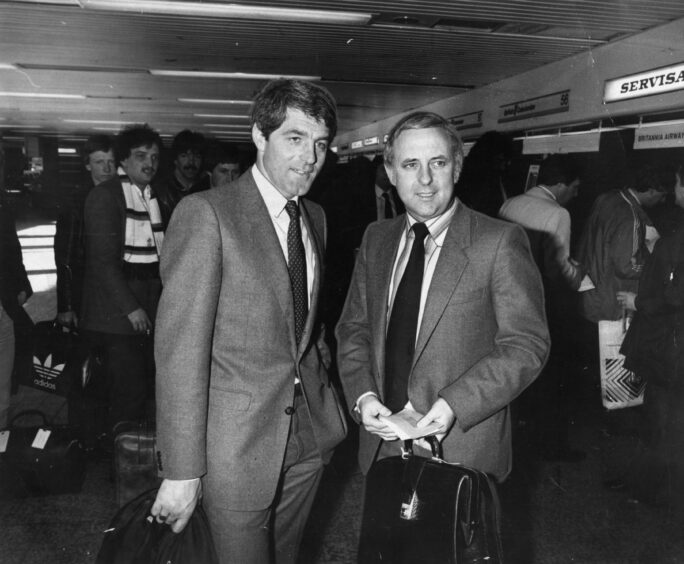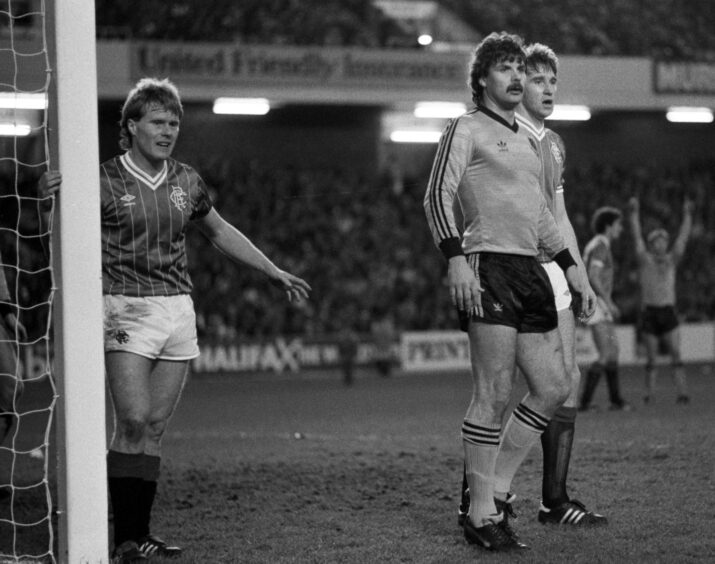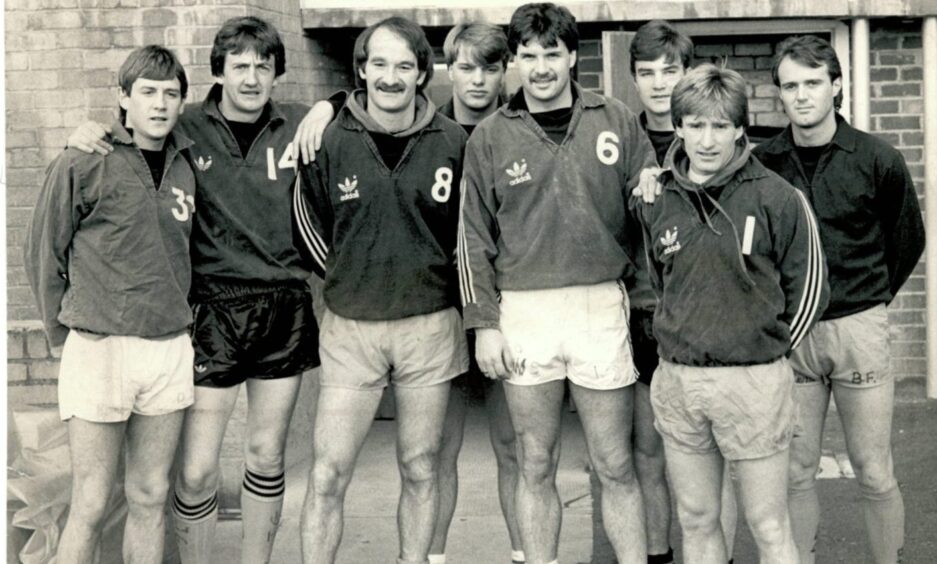
Rangers great Derek Johnstone fulfilled a childhood dream when he signed for Dundee United in October 1983.
His only regret was that his father was not there to share the moment.
Johnstone grew up in Fintry and was the third youngest of seven sons.
He was indoctrinated into Dundee United fandom by his father who took the family to Tannadice every other Saturday when the terraces were a sea of bunnets.
“It was like a Sunday school outing, those seven boys – all dressed up in United colours – trooping along to support their team,” the Gers icon recalled in 1979.
“There was a standing joke in Dundee that the Johnstone family was so large that my father had to book the entire stand at Tannadice.
“Certainly we seemed to swell the attendance figures.”
Johnstone used to go to Fintry Primary with a black and white United scarf wrapped round his neck and the names of his favourite players scrawled on his school bag.
The 10-year-old’s world fell in on itself when his father died.
Johnstone had just been called up for the Scottish Schoolboys’ squad when tragedy struck and the grief and sense of loss would remain with him for a considerable time.
Football was a distraction from the heartbreak and he started to attract the attention of scouts when he moved to Linlathen High School and continued scoring goals for fun.
“Rangers were the first club to approach me,” he said.
“I was playing for the school team in the mornings and in the afternoon I would turn out for St Francis Boys Club under-18 side, although I was still only 14.
“(They) invited me to travel through to Glasgow with him and spend a day at Ibrox.
“That approach by Rangers was to throw me into the first real dilemma of my life.
“I was a dyed in the wool Dundee United supporter, with no time for any other team in Scotland, Rangers included, and I knew that United were also interested in me.
“I desperately wanted to play professional football and the club which I longed to sign for was Dundee United.
“The club whose colours I wore to school every day.
“The team I followed all over Scotland.”
Johnstone’s chance to impress came when he was invited to train with the Dundee United part-timers at Tannadice on a Tuesday and Thursday night.
“All we would do was run round the track,” he said.
“No football coaching, just more and more running.
“I was 14, running 50 or 60 miles a week at school, and as fit as anyone.
“What I did need was schooling on the football field, to be taught the finer points of the
game, the techniques of tackling, shooting, heading and crossing the ball.
“That kind of coaching set up did not exist for youngsters, and slowly I realised that, despite my love for the club, better things may have been waiting for me elsewhere.
“How right that was to turn out to be.”
Johnstone signed for Rangers as a schoolboy in 1968, although he was also wanted by Jock Stein whose all-conquering Celtic team had won the European Cup in 1967.
He was still living in Findowrie Street in Fintry when he scored the winning goal in the 1970 League Cup Final, aged 16, against Stein’s Celtic side, just a month after making his Rangers debut against Cowdenbeath.
He was in the Rangers team which won the European Cup Winners’ Cup in 1972 and domestically won three League Championships, five League Cups and five Scottish Cups.
From the King’s Road to Tannadice Street
Having been placed on the transfer list by John Greig in April 1983, Johnstone left Rangers after the 1983 Scottish Cup Final defeat against Aberdeen to join Chelsea in the Second Division for a £50,000 transfer fee.
He failed to dislodge strike partners Kerry Dixon and David Speedie and made just four appearances at Stamford Bridge before going on loan for a month to Dundee United.
United manager Jim McLean wanted to sign Johnstone on a permanent basis with Paul Sturrock injured but Chelsea chairman Ken Bates was having none of it.
A loan deal was instead agreed following discussions.
Fans had to do a double-take when Johnstone arrived on Tannadice Street from the King’s Road sporting a handlebar moustache like Tom Selleck in Magnum, P.I.
“This is a terrific move for me,” said Johnstone in 1983.
“As a boy United were my team and so playing for them means something special.
“It’s great to feel wanted again and I’m very keen to show I still have something to offer.
“The move to United gives me the chance to make a few people sit up and take notice.
“Make no mistake about it, I can still do a job in this business.”
He was right.
Johnstone made his United debut in a League Cup tie against Morton at Tannadice on October 26 1983 and scored two goals in a 3-0 win watched by 6,645 fans.
The Evening Telegraph said United followers were “all agog at the prospect of seeing Derek Johnstone in a tangerine jersey” which boosted the midweek attendance.
He looked trim and really in the mood from the off.
John Holt and Davie Dodds combined to give Johnstone the opportunity to open the scoring on 25 minutes with a 20-yard strike that received a standing ovation.
Ralph Milne made it 2-0 on 43 minutes.
Johnstone got his second just 60 seconds into the second-half when he flicked the ball over the head of a defender before hammering home a great drive from 12 yards.
He was eventually replaced on 68 minutes by John Reilly, after having taken a knock when his left-foot volley was cleared off the line to deny him a glorious hat-trick.
United fans had a new hero to cheer
The Evening Telegraph said: “Congratulations are due to Derek Johnstone for giving the fans what they had come to see – goals in the grand manner.
“However many good players a club has – and United have plenty – the crowd is always looking for a new hero, and last night they found one.”
Was Jim McLean also impressed?
“Derek was somewhat short of match fitness,” he said.
“But he did what was asked of him.
“He was relieved, and the club was relieved, that he made a successful debut and showed he has something to contribute.
“However, it’s too early to go overboard.”
Johnstone kept his place alongside Dodds for the Premier League 2-2 draw at Motherwell the following Saturday where he was a constant threat in attack.
The 29-year-old laid on the opening goal for Dodds with a superb flick.
Johnstone started the Dundee derby at Tannadice on November 5 1983, after celebrating his 30th birthday, but there was little to cheer for McLean’s side.
Peter Mackie scored the only goal for Dundee on 19 minutes.
Johnstone almost brought United level early in the second half but his overhead kick flew wide.
He then made substitute appearances in the midweek 4-2 League Cup win against Alloa and the 7-0 Tayside derby victory against St Johnstone where he set up the final goal.
The last game of Johnstone’s loan spell for United was a scriptwriter’s dream.
A league match against Rangers at Ibrox was the setting and both sets of supporters stood to clap Johnstone when he replaced Ralph Milne on 54 minutes at 0-0.
There was no fairytale ending to his brief United stay.
He returned to Chelsea and won the Second Division title in 1984 but things never really worked out in London.
He was temped back to Rangers by Jock Wallace in January 1985 and made just over 20 appearances over the next year.
Johnstone was handed a free transfer when Graeme Souness took over in 1986 and there was a short spell in management with Partick Thistle before he retired from the game and took up a role in the media.
He retains a great affection for the Fintry estate where he grew up.
And Dundee United.
